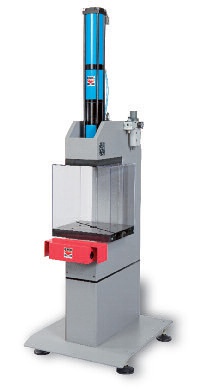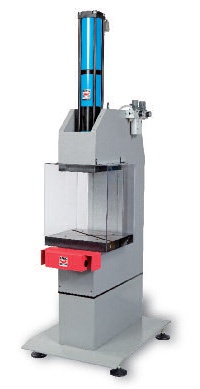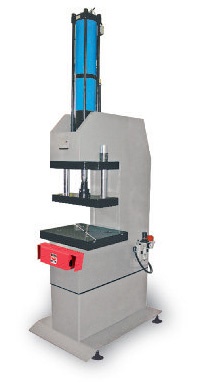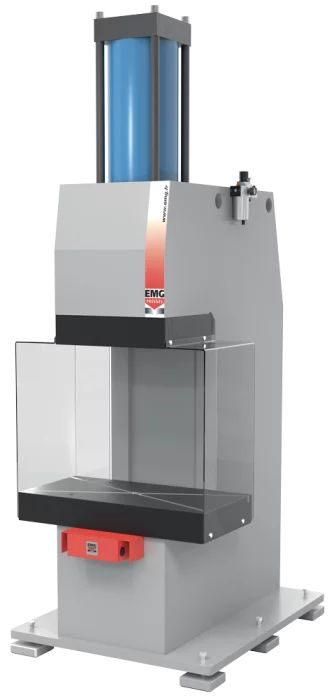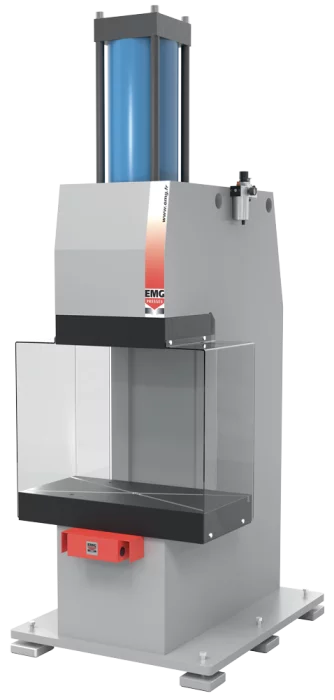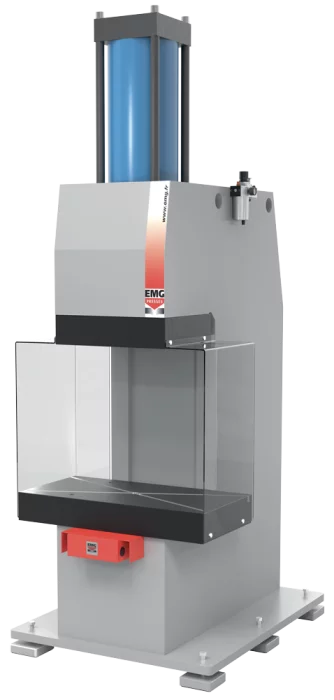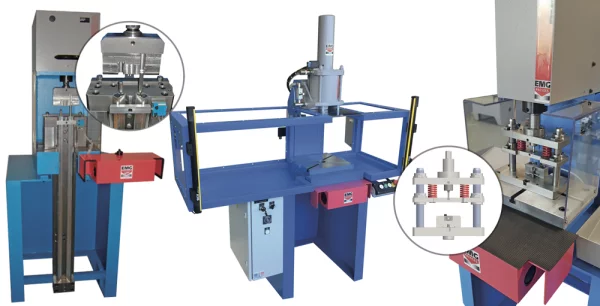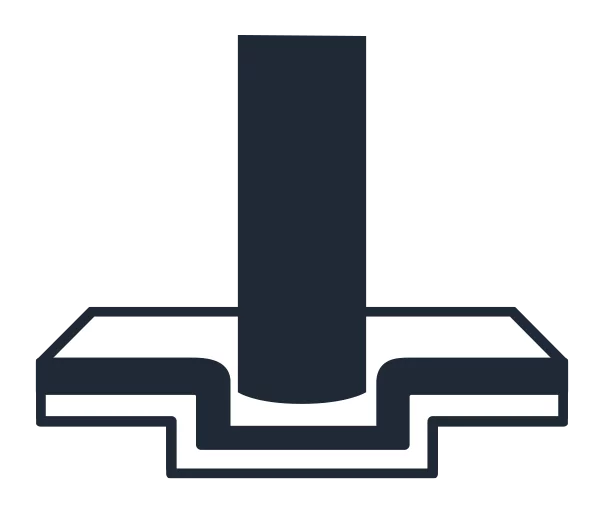Hydropneumatic presses
EMG hydropneumatic presses, otherwise known as oleopneumatic presses, are high-power, high-precision machine tools. A true technological tool, operating with compressed air only, they are powerful and economical. Particularly well-suited to riveting and metal bending, their power can reach 100 tons. Each frame is adapted to the power of the cylinder.
| Power*7.6 » 8.6 tons |
| Total stroke*1.9 » 15.7 inch |
| Power stroke*0.24 » 2.36 inch |
| Swan-neck depth7.2 inch |
| Clear height15.5 inch |
| Weight1,100 lbs |
| Power*14.7 » 15.4 tons |
| Total stroke*1.9 » 11.8 inch |
| Power stroke*0.24 » 1.57 inch |
| Swan-neck depth8.6 inch |
| Clear height16.9 inch |
| Weight1,650 lbs |
| Power*31.2 » 33.8 tons |
| Total stroke*1.9 » 15.7 inch |
| Power stroke*0.24 » 1.57 inch |
| Swan-neck depth9.8 inch |
| Clear height19.6 inch |
| Weight2,650 lbs |
| Power*50 » 52 tons |
| Total stroke*2.7 » 15.7 inch |
| Power stroke*0.24 » 1.57 inch |
| Swan-neck depth10.6 inch |
| Clear height22,8 inch |
| Weight2,850 lbs |
| Power*80 tons |
| Total stroke*3.9 » 11.8 inch |
| Power stroke*0.39 » 0.63 inch |
| Swan-neck depth10.6 inch |
| Clear height23.6 inch |
| Weight9,920 lbs |
Applications
MAIN FEATURES
CHARACTERISTICS OF AN EMG HYDROPNEUMATIC PRESS:
Our cylinder is a compressed air cylinder with closed hydraulic circuits, which allows attaining the requested loads with a stroke which is triggered when the piston gets a resistance. The action is very simple and similar to pneumatic double effect cylinders. This technology thus combines the advantages of both pneumatic and hydraulic systems, without any adverse effects (these include for example, no noisy, dirty hydraulic motors, and low air consumption). The result is perfect workmanship on every part, whatever the application.
|
|
|
|
|
|
Economical and silent, our presses require little or no maintenance. Compared to manual presses, they offer greater power, stroke, speed and quality of execution, for perfect results on every operation or machined part.
Our range of presses has :
- 6 different standard frames and 60 cylinders allowing an unlimited number of combinations.
- a power from 7 to 110 tons.
- a total stroke from 1.9 to 11.8 inch.
- a working stroke from 0.24 to 2.36 inch.
-
4 feet for guaranteed stability.
Our commitment
EMG has been a French manufacturer of bench, workshop and industrial presses for over 50 years. Quality is our priority. For us, it's the result of a flawless process. Our aim is to design the perfect oleopneumatic press to meet your needs, while respecting 5 essential commitments:
- state-of-the-art workmanship
- guaranteed long-term durability
- fast delivery times
- a very good quality/price ratio
- a total listening and understanding of your expectations.
Explanatory Diagram of Operation
The fast approach run without power
The cylinder is supplied with compressed air at the marks (1) and (2). The rapid but rapid yet controlled descent of the feed piston (3) and the slider (4) takes place until resistance is reached. In this step, the oil fills the hydraulic chamber (5).
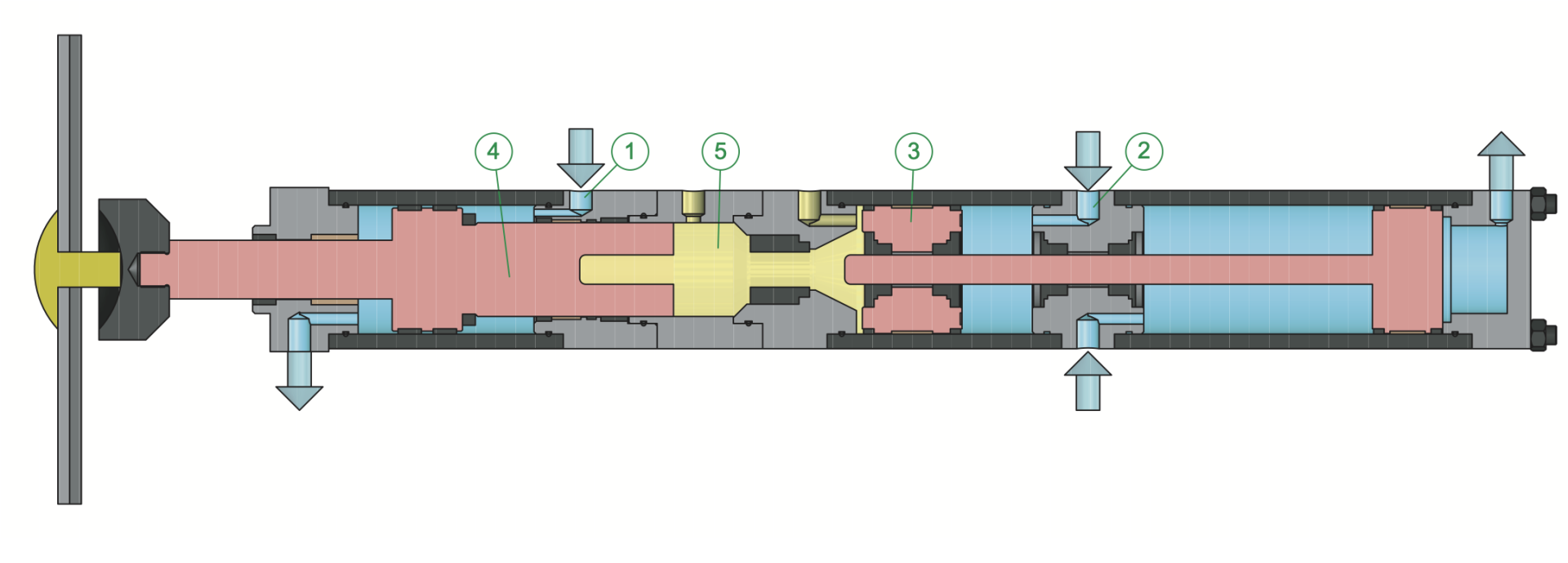
The slow working stroke with power
A control valve switches the pneumatic supply to the mark (6), the working piston (7) descends. During this phase, the plunger rod of the working piston (7) enters in the hydraulic chamber (5), compresses the oil, which greatly increases the power of the slider (4).

The return stroke and the stand-by position
The cylinder is supplied with compressed air on the marks (8) and (9). The slider (4), the feed piston (3) and the working piston (7) rise at high speed and remain held in the high position.

APPLICATIONS
The hydropneumatic presses develop a high power and a great precision of execution, particularly at the end of the stroke. They are therefore perfectly adapted to riveting and bending all types of parts. Indeed, these two applications require an adapted lowering speed management with a higher effort at the end of the stroke for both riveting and bending.
